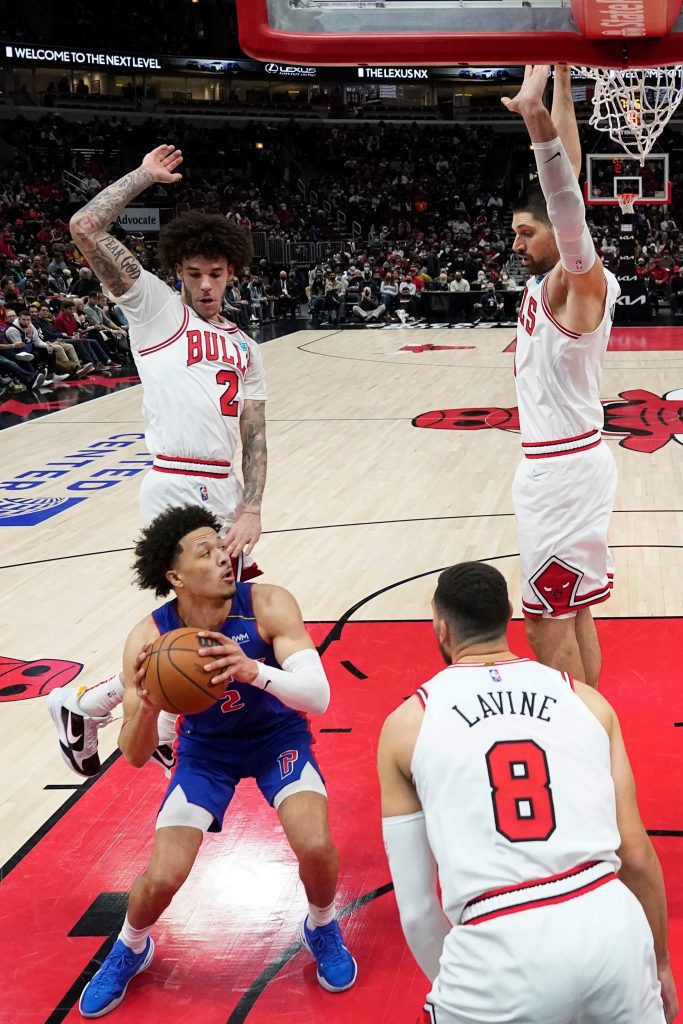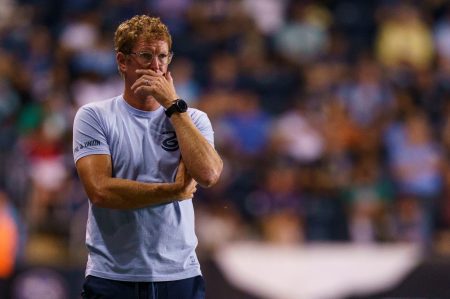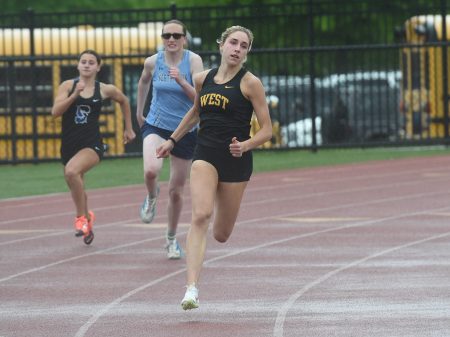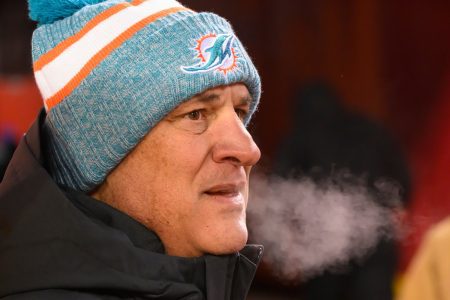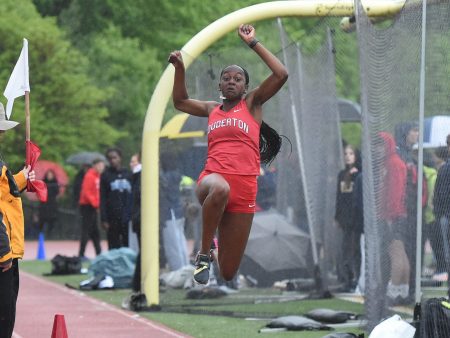Almost two years after his last NBA game, Lonzo Ball is starting to take the next steps to come back to the court and eventually join the Chicago Bulls lineup.
Ball has not played basketball since Jan. 14, 2022, when he sustained a meniscus injury that resulted in extensive, ongoing issues in his left knee. Over the past two years, he has undergone three surgeries, including a cartilage transplant in March. Ball had already been ruled out for a return this season.
We’re keeping up with all the news about Ball.
Jan. 26: Back on the bench, but running postponed due to illness
Ball reunited with his Bulls teammates in Los Angeles on Thursday night and spent the entire 141-132 loss to the Lakers sitting on the bench.
Ball sat on the bench with fellow injured teammates Zach LaVine and Torrey Craig, keeping track of statsheets and providing gum and towels on the sideline during the second half.
Teammate DeMar DeRozan mentioned that the team does its best to stay close with Ball despite the separation as he undergoes rehabilitation in Los Angeles. Ball is part of group chats, and various teammates regularly check in on him. However, DeRozan said it's more gratifying to reconnect with Ball in person during visits.
“It’s always great to see him,” DeRozan said. “The word(s) that he comes with is such a positive, uplifting feeling that he brings so whenever you’re around, it’s good to see him. Just a reminder the type of special person he is.”
However, both Ball’s reunion with his team and recovery timeline have been delayed due to illness. He was unwell for most of this week, which meant he was unable to attend practices at UCLA as previously planned or attempt straight-ahead sprints, the next step in his recovery.
Coach Billy Donovan said Ball was previously scheduled to attempt sprints by the end of January. The guard has not been able to successfully sprint without pain or discomfort since January 2022.
“That was the plan,” Donovan said ahead of Thursday’s game. “That’s what I had talked to him about in December when he was in town and the hope was in January, he would start. I do think he is jogging. He just has not sprinted and done that.”
Ball underwent his first workout since he became sick on Thursday. If he continues to improve, he could still attempt straight-ahead sprinting by the end of the month, but Donovan was not certain whether it was approved by Ball’s medical team.
Jan. 22: No setbacks, but no sprinting yet
With a week left in January, Ball is back to running — but has yet to straight-ahead sprint on a treadmill or on the floor, coach Billy Donovan said Monday.
Donovan said Ball has experienced “no setbacks,” which strengthens the Bulls’ hope for his progress. However, Ball is still restricted in the scope of his recovery exercises as his medical team aims for a slow and steady rehabilitation.
“He’s doing a lot of agility work right now,” Donovan said. This includes high knees, lateral shuffles and other mobility drills. “He has not been fully cleared to sprint but he is doing some more agility work.”
Donovan stated he does not know when Ball will be allowed to sprint. Ball will meet with the team in Los Angeles this week for five days, giving him a good chance to rejoin the familiar and new players.
Jan. 14: Two-year anniversary since Ball’s last game with the Bulls
Sunday marked two years since the last time Ball played basketball. During that time, the Bulls have had a record of 78-87 over three seasons, winning just one playoff game.
After being ruled out for the 2023-24 season, the earliest Ball will return is the next season opener, which means he will likely go more than 1,000 days without participating in an NBA game.
Bulls fans are used to eagerly awaiting the return of a beloved star. Michael Jordan took 1,291 days away from basketball after his first retirement in 1993, returning to the game midway through the 1994-95 season. Derrick Rose played only 10 games in a span of 30 months after tearing his ACL in a playoff game on April 28, 2012.
Ball isn’t the first NBA player to need a lengthy recovery period before making his way back to the court. Klay Thompson is the most recent example of success in the NBA after a tough absence due to injury. Thompson went 941 days without playing in an NBA game after tearing his ACL in Game 6 of the 2019 Finals, then tearing his Achilles midway through recovery. He returned in January 2022 and averaged 20.4 points in the regular season and 19 points in the playoffs on the way to a fourth NBA title with the Golden State Warriors.
But when players are away from the court for more than 1,000 days due to injury, it’s uncommon to return to full speed. The league has numerous examples of this challenge.
After being chosen as the No. 1 overall pick in 2007, Greg Oden was plagued by knee injuries that delayed his rookie debut by a year, then kept him out for 1,502 days before he returned in January 2014. Oden only played 23 more games before leaving the league.
A similar timeline befell center Emeka Okafor, who sat out for 1,757 days after suffering a neck injury in 2014 before finally making his way back onto a roster with the New Orleans Pelicans in 2018. He concluded his NBA career after that season.
If Ball’s recovery proceeds according to plan this year, he will try to become a new success story of injury recovery in the league this fall.
Jan. 9: Should the Bulls include Ball in trade packages for Zach LaVine?
Attempting to trade maximum contract star Zach LaVine has been the clear focus for the Bulls front office since November, when the star reportedly made a first-time request to explore a trade away from Chicago. With a month left before the Feb. 8 trade deadline, Ball could emerge as a potential addition to enhance trade packages centered on LaVine.
According to a report by Marc Stein, the Bulls are potentially open to using the insurance coverage currently accompanying Ball’s contract as an incentive to bundle into trade packages for LaVine.
Ball would not offer an immediate boost to any team in a trade. He won’t be available to play until this fall at the absolute earliest and after two years away from the game, it’s impossible to predict how close to his prior form Ball will be able to return to when — and if — he receives medical clearance to play.
So why might Ball be seen as an additional part of trade deals? The answer comes down to the numbers.
Next season could be Ball’s final one with the Bulls. He has a $21.4 million player option for the season, which he will surely use. If he didn't, he would be without a contract as he tried to return to the court. He wouldn't take that risk even if he was confident in making a full, healthy return.
However, until Ball gets medical clearance, the Bulls don’t need to worry about his contract. They got a $10.2 million player exception in the summer. Also, 80% of Ball’s salary is already covered by the league’s insurance due to the seriousness and duration of his injury.
Trading Ball would also mean moving these injury exceptions. For a team trying to reduce its payroll by a significant amount, this could be a good deal — especially if the front office is optimistic about Ball’s ability to come back from a 2-plus-year break.
But there are downsides to parting ways with Ball. Even though there were reports of trade interest in DeMar DeRozan, the Bulls front office doesn't seem interested in moving multiple major pieces at once. Making that trade would ultimately mean giving up on a long process that has held the franchise captive to the hope of what a full recovery would mean for both Ball and the Bulls.
In the end, this move is different for the Bulls front office. But it’s an interesting thing to keep an eye on, especially if the Bulls start to make efforts to find a trade destination for LaVine in the next three weeks.
Dec. 28: Ball expected to begin running in January
Lonzo Ball is anticipated to start running again in January as the next step of his nearly two-year-long recovery from a knee injury.
Ball returned to Chicago last week to meet with Bulls staff and layout a plan for the next steps of his recovery after undergoing a rare cartilage transplant in March.
The Bulls do not expect him to play in a game until the 2024-25 season. But coach Billy Donovan said the team has been encouraged by Ball’s response to his third knee procedure.
Ball has been able to progress with weight and mobility training and stationary shooting while recovering in Los Angeles over the past six months. Most importantly, Donovan said Ball is pain-free at this point in his recovery after suffering chronic pain in everyday activities for the first year after the injury.
“The progress he’s made has been handled very well,” Donovan said. “The pain that was causing the setback seems to have been eliminated — but he hasn’t run. The next step for him is to start running, and that will be happening in January.”
()





